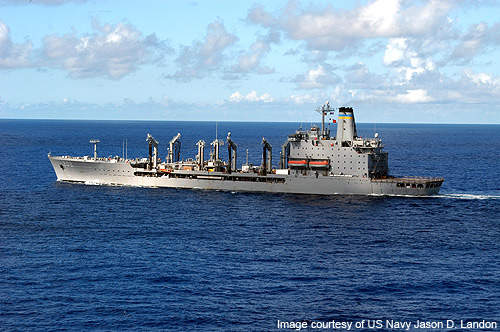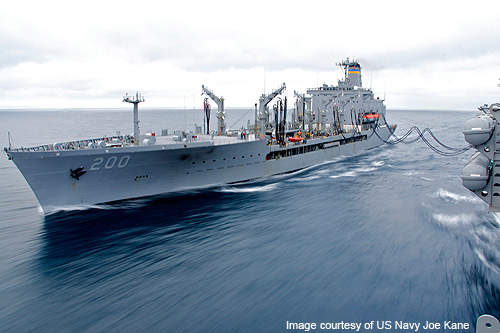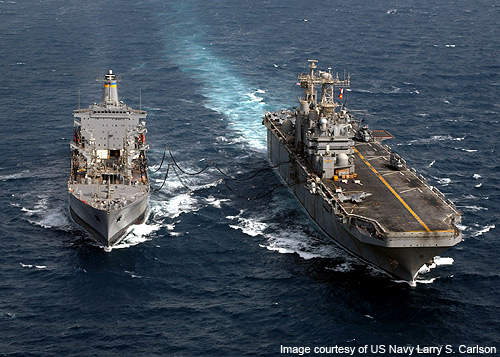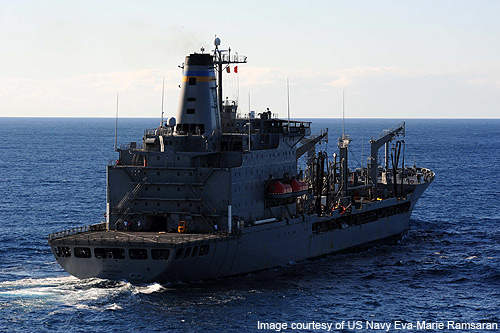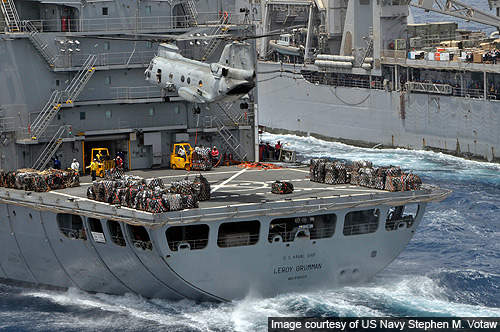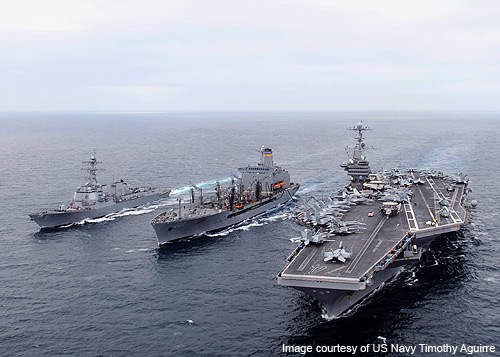The Henry J. Kaiser Class fleet replenishment oilers are in service with the US Navy. The Military Sealift Command operates 15 ships and the Chilean Navy operates one ship that was acquired from the US Navy.
The ships perform underway replenishment of US Navy warships and aircraft aboard the aircraft carriers.
The Henry J. Kaiser Class ships were built at the four shipyards of Avondale Shipyard, Sun Shipbuilding and Drydock Company, Pennsylvania Shipbuilding Company and Tampa Shipbuilding Company.
Henry J. Kaiser Class ships
The keel for the first ship in a class of 18 fleet replenishment oilers, USNS Henry J. Kaiser (T-AO 187), was laid down in August 1984.
It was launched in October 1985 for the delivery in December 1986. USNS Joshua Humphreys (T-AO 188) was laid in December 1984, launched in February 1986 and entered service in April 1987.
USNS John Lenthall (T-AO 189) was laid in July 1985, launched in August 1986 and entered service in July 1987. USNS Andrew J. Higgins (T-AO 190) was laid in November 1985, launched in January 1987 and entered service in October 1987.
It was sold to Chilean Navy in 2009 and recommissioned as Almirante Montt in February 2010.
The fifth and sixth ships in the class, USNS Benjamin Isherwood (T-AO 191) and USNS Henry Eckford (T-AO 192), were cancelled prior to completion and transferred to the Maritime Administration.
The USNS Walter S. Diehl (T-AO 193) was laid in August 1986, launched in Cotober in 1987 and entered service in September 1988; USNS John Ericsson (T-AO 194) was laid in March 1989, launched in April 1990 and entered service in March 1991; USNS Leroy Grumman (T-AO 195) was laid in July 1987, launched in December 1988 and entered service in August 1989; USNS Kanawha (T-AO 196) was laid in July 1989, launched in September 1990 and entered service in December 1991.
USNS Pecos (T-AO 197) was laid in February 1988, launched in September 1989 and entered service in July 1990; USNS Big Horn (T-AO 198) was laid in October 1989, launched in February 1991 and entered service in May 1992; USNS Tippecanoe (T-AO 199) was laid in November 1990, launched in May 1992 and entered service in February 1993; USNS Guadalupe (T-AO 200) was laid in July 1990, launched in October 1991 and entered service in September 1992; USNS Patuxent (T-AO 201) was laid in October 1991, launched in July 1994 and entered service in June 1995; USNS Yukon (T-AO 202) was laid in May 1991, launched in February 1993 and entered service in March 1994; USNS Laramie (T-AO 203) was laid in January 1994, launched in May 1995 and entered service in May 1996; USNS Rappahannock (T-AO 204) was laid down in March 1992, launched in January 1995 and entered service in November 1995.
Design and features of the Henry J. Kaiser Class Replenishment Oilers
Three ships in the class incorporate double hulls and the remaining ships feature single hull design.
The double hull form protects the cargo tanks from damage and complies with the regulations of the oil pollution act of 1990. Either side of the ship features stations for underway replenishment of fuel and stores.
The vessel has an overall length of 206.5m, beam of 29.7m and a maximum draft of 11m. The full load displacement of the ship is 41,353t.
The ship can complement 89 civilian crew (19 officers), six US Navy personnel and 29 spare personnel.
Replenishment systems for Henry J. Kaiser Class Replenishment Oilers
The ship has five fuelling stations, of which two are located on the starboard side and three on port side.
The fuelling stations are capable of refilling two vessels at once and can pump up to 900,000 gallons of diesel and 540,000 gallons of jet fuel an hour.
The ships are also equipped with storage facilities for small quantities of fresh and frozen supplies, stocks and other materials.
The ship has dry cargo carrying capacity of 690m² and can hold up to eight 20ft refrigerated containers housing 128 pallets of chilled food.
The fleet cargo, mail and supplies are delivered by either ConRep (connected replenishment) from two dry cargo rigs or VertRep (vertical replenishment).
Armaments
Henry J. Kaiser Class is not fitted with any weapon system, but space and weight arrangements were made for installing two Phalanx close-in weapon systems (CIWS).
Helicopter landing platform capabilities
Henry J. Kaiser Class has large helicopter landing platform but lacks hangar and maintenance facilities for embarked helicopter. The helideck provides the capability to resupply combat ships in a task group via VertRep.
Propulsion, power and speed
The ship is powered by two medium-speed Colt-Pielstick 10 PC4.2 V 570 diesel engines driving controllable pitch propellers through two shafts. These engines develop a total sustained power of 25.6MW. The propulsion system provides a maximum speed of 20kt.
US Defence Sector – Market Opportunity and Entry Strategy, Analyses and Forecasts to 2015
Detailed analysis and forecasts of the US defence market are available from our business information platform Strategic Defence Intelligence. For more information click here or contact us: EMEA: +44 20 7936 6783; Americas: +1 415 439 4914; Asia Pacific: +61 2 9947 9709 or via email.

